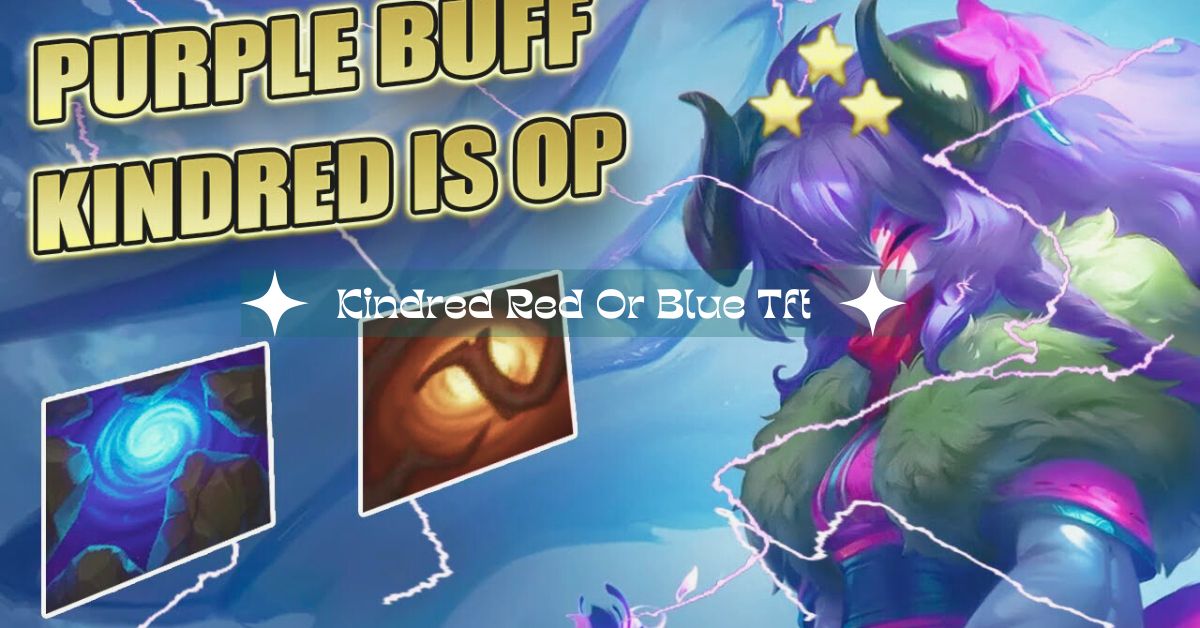Kindred Red Or Blue Tft: A Complete Guide To Choosing The Right Variant
I’ve found that choosing between kindred red or blue TFT depends on your playstyle. I prefer Kindred Red for its burst damage that can quickly turn the tide of a match. However, Kindred Blue offers more consistent damage and better survivability, which I found useful in longer battles.
Choosing between kindred red or blue TFT depends on your strategy. Kindred Red is great for fast, high damage, while Kindred Blue offers steady damage and better survival in long fights. Pick the one that fits your playstyle and team needs.
In this article, we’ll dive into the choice between Kindred Red and Blue in TFT. We’ll explore what makes each variant unique, how they impact your gameplay, and which one might be better for your specific strategy.
Introduction to Teamfight Tactics (TFT)
Teamfight Tactics (TFT) is a popular auto-battler game mode by Riot Games, set in the League of Legends universe. In TFT, players draft, position, and battle with a team of champions against seven other players.
Each game is unique, with strategies and compositions varying widely depending on the champions and items available. One such champion that often poses a strategic choice for players is Kindred, specifically when deciding between the Red and Blue variants.
Understanding Kindred in TFT
Kindred, a duo consisting of Lamb and Wolf, is a champion in TFT known for their ability to deal damage from a distance while remaining elusive. In TFT, Kindred is versatile, fitting into various compositions depending on the meta and player preference.
The choice between the Red and Blue variants of Kindred can significantly impact your strategy and success in a match.
The Significance of Color Variants in TFT
Color variants in TFT, like Kindred Red and Blue, represent different forms or builds of the same champion. These variants usually have distinct abilities, stats, and playstyles, offering players the flexibility to adapt to different situations.
Understanding how these variants work is crucial to mastering the game, as the right choice can give you a tactical edge over your opponents.
Kindred Red Variant: An Overview
The Kindred Red variant is known for its aggressive playstyle. This variant typically focuses on dealing high burst damage and is often favored by players who enjoy a fast-paced, high-risk, high-reward approach. Kindred Red excels in scenarios where quick elimination of key enemy units is crucial.
Strengths and Weaknesses of Kindred Red
- Pros of Kindred Red
- High burst damage potential
- Excellent at taking down priority targets
- Can quickly turn the tide of battle with timely attacks
- Cons of Kindred Red
- Vulnerable to crowd control effects
- Requires precise positioning to avoid being targeted
- Can be less effective in prolonged fights
Kindred Blue Variant: An Overview
In contrast, the Kindred Blue variant is more about sustained damage and survivability. This variant is often chosen by players who prefer a more calculated, methodical approach to the game. Kindred Blue can steadily wear down opponents while maintaining a safe distance, making it a reliable choice in various situations.
Strengths and Weaknesses of Kindred Blue
- Pros of Kindred Blue
- Consistent damage output over time
- Better survivability due to defensive abilities
- Ideal for outlasting opponents in drawn-out battles
- Cons of Kindred Blue
- Lower burst damage compared to the Red variant
- May struggle against teams with high burst potential
- Requires more strategic positioning and timing
Comparing Kindred Red and Blue
When comparing Kindred Red and Blue, the key differences lie in their playstyles and effectiveness in different scenarios. Kindred Red is all about quick, decisive action, making it ideal for players who like to play aggressively. On the other hand, Kindred Blue offers a more balanced, defensive approach, suited for players who prefer a more controlled, strategic game.
Building a Team Around Kindred Red
To maximize the potential of Kindred Red, it’s important to build a team that complements its strengths. Champions that can protect Kindred Red or enhance its burst damage are ideal. Consider including units with crowd control abilities to keep enemies at bay while Kindred Red delivers the finishing blow.
Building a Team Around Kindred Blue
For Kindred Blue, team composition should focus on enhancing survivability and sustained damage. Supportive champions that can heal or shield Kindred Blue, along with tanks that can absorb damage, are crucial. This setup allows Kindred Blue to continuously chip away at the enemy without being overwhelmed.
Advanced Strategies for Using Kindred Red
Maximizing the potential of Kindred Red requires advanced strategies such as precise timing of abilities and positioning. One effective tactic is to position Kindred Red in a way that allows it to target key enemy units from a safe distance, minimizing the risk of being caught out by enemy crowd control.
Advanced Strategies for Using Kindred Blue
With Kindred Blue, advanced strategies revolve around maintaining its positioning and utilizing its defensive abilities effectively. Consider placing Kindred Blue behind a strong frontline that can absorb damage while it steadily deals damage from the backline. Timing and coordination with your team are crucial to ensure Kindred Blue’s effectiveness.
Common Mistakes to Avoid with Kindred Variants
- Pitfalls when playing Kindred Red
- Overextending without sufficient protection
- Ignoring the importance of positioning
- Focusing too much on damage and neglecting survivability
- Pitfalls when playing Kindred Blue
- Playing too passively and missing opportunities for damage
- Poor positioning leads to being caught out by the enemy
- Not utilizing defensive abilities to their full potential
Which Kindred Variant is Best for You?
Choosing between Kindred Red and Blue ultimately comes down to your playstyle and the current state of the game. If you prefer a more aggressive, high-risk approach, Kindred Red might be the best choice for you.
However, if you value consistency and survivability, Kindred Blue could be more up your alley. It’s also important to consider the composition of your opponents and adapt accordingly.
FAQs:
What makes Kindred a strong choice in TFT?
Kindred’s versatility and ability to fit into various compositions make them a strong choice in TFT, allowing players to adapt to different situations.
Can you switch between Kindred Red and Blue mid-game?
No, you cannot switch between the Red and Blue variants mid-game. The choice must be made at the beginning based on your strategy.
Which variant is more beginner-friendly?
Kindred Blue is generally considered more beginner-friendly due to its focus on survivability and sustained damage, making it easier to manage for new players.
How does the meta affect the choice between Red and Blue?
The meta can significantly influence which variant is more effective. If the meta favors burst damage, Kindred Red might be better, while a meta that values sustained fights may favor Kindred Blue.
Conclusion:
Both Kindred Red and Blue offer unique strengths and challenges in TFT. Understanding when and how to use each variant can give you a significant edge in your matches. By considering your playstyle, team composition, and the current meta, you can make an informed decision that will help you climb the ranks in TFT.






